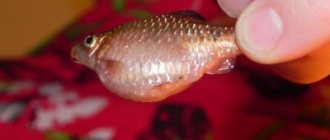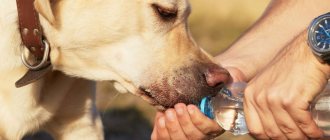Rabbits have a very weak immune system. Even with proper care and nutrition, they are not protected from dangerous viral diseases that can kill the entire herd on a farm. Young rabbits are even more susceptible to various types of diseases, especially after weaning from their mother rabbit. Let's take a look at the various causes of rabbit mortality together. This information will help farmers focus their efforts on reducing the risk of livestock loss.
Why do rabbits die? Rabbit diseases and their treatment
Irregular cleaning of cages, dirty or stale water in drinking bowls, spoiled feed are the main causes of animal diseases.
Poor maintenance and improper feeding means killing your own pets. In addition, if the diet is unbalanced, it does not contain enough vitamins and minerals, the rabbits’ immune system begins to malfunction, and therefore their level of resistance to viral infections decreases. This is especially true in the summer.
The most common diseases of rabbits are listed below:
- rabbit viral hemorrhagic disease (RVHD);
- coccidiosis;
- pasteurellosis;
- myxomatosis;
- flatulence.
VGBK
If an animal is affected by this disease, it may die. Rabbits that are more than two months old get sick. VGBK (otherwise known as fever) is extremely contagious. It can be transmitted through meat, wool and excrement of infected animals, as well as through airborne droplets.
In the acute course of this disease in rabbits, the symptoms are as follows: the animal completely loses its appetite, loses weight, begins to behave very restlessly, quickly becomes weak and becomes inactive, with cramps in the limbs and throwing back of the head.
The animal is in pain, which is why it periodically squeaks, and in some cases blood appears from the nose. The death of a rabbit occurs quickly, within one to three days. VHD destroys the liver and causes pulmonary edema, which most often causes death due to oxygen deprivation.
There is no cure for this disease in animals.
The first time it should be done at the age of one and a half months. Adult animals can be vaccinated at any time, but at least twice a year. There is no cure for this disease yet, and the reasons for the 10 percent recovery are unknown.
Coccidiosis
Pathogens are the simplest unicellular parasitic microorganisms. The intestines and liver are affected. It is worth saying that almost all rabbits are carriers of coccidiosis, but the clinical form of the disease is rare.
The disease is transmitted through food and water through coccidia oocytes. Healthy rabbits that have good immunity usually successfully resist the development of coccidia into a painful form.
A killed rabbit affected by this disease has light-colored pinpoint nodular growths in the intestines and on the surface of the liver. Another sign of coccidiosis is an enlargement of the liver five times.
Keeping cages clean and dry, as well as avoiding overcrowding, will help prevent disease.
Visible symptoms include sneezing, runny nose and refusal to eat.
This disease (unlike others) has been known for a long time.
Pasteurellosis causes death in animals, but to a much lesser extent than VGBV and myxomatosis.
This depends on compliance with sanitary and hygienic standards and diet. The better they are, the greater the survival rate.
The acute course of this disease in rabbits is characterized by an increase in the rabbit's body temperature to 41 degrees, followed by shortness of breath, sneezing and runny nose. The acute form most often leads to the death of the animal within a few days, and sometimes even hours. The chronic form usually manifests itself as rhinitis and conjunctivitis, which is often misleading when making an accurate diagnosis. The stool of the affected rabbit is liquid; in some cases, purulent abscesses appear under the skin, which open after one and a half to two months.
Myxomatosis (distemper)
Of particular danger is the long incubation period (from five days to two weeks), during which there may be no external signs, and the sick animal infects healthy relatives.
In addition to mucous discharge, rabbits affected by myxomatosis have swollen eyes, and nodular tumors appear in the ears and nose.
Myxomatosis is characterized by rapid spread, and if one sick rabbit is found, then most likely the rest of the population is also infected.
Typically, an associated VGBV vaccine is vaccinated, the structure of which contains microparticles of both viruses (VGBV and myxomatosis).
Flatulence
The rabbit's intestine is a very sensitive organ, and if its normal functioning is disrupted, it is difficult, and sometimes simply impossible, to normalize its functioning. The cause of flatulence is a sharp change in the flora of the gastrointestinal tract. This may be caused by unusual food, which was immediately given in large quantities. This is especially true for very wet or succulent types of feed.
This is caused by fermentation processes in the intestines of undigested food, which, due to refusal to eat, is not replaced with new food. Such an environment is very favorable for the development of pathogenic bacteria, which destroy the walls of the rabbit intestines and, ultimately, can cause death.
Infectious diseases: coccidiosis, cysticercosis, pasteurellosis
Coccidiosis is caused by parasites that infect the gastrointestinal tract. There are two stages of disease development:
- in the animal's body;
- in the environment.
Up to 70% of animals die from the disease. The disease can be liver and intestinal. Hepatic coccidiosis continues for two months. At this time, the animal is exhausted. The intestinal form disappears in ten days, after which the animal dies. The rabbit is incubated for three days. He has jaundice and his stools contain blood. The age of the animal may vary, but most often two-month-old rabbits are susceptible to this. The disease is diagnosed using laboratory tests.
Coccidiosis is treated in several ways:
- 1. Use of iodine solution at the rate of 0.01% solution per day per 100 g of body weight. For pregnant females, the dosage is increased after the 25th day of pregnancy. Rabbits are treated in the same way with a dosage half as much.
- 2. Treatment with a solution of a sulfonamide drug. The animal is treated twice a day for five days.
Another disease that is widespread in rabbits is cysticercosis. It is caused by cestode larvae. The liver is affected and peritonitis begins. It mainly affects young animals under the age of 1 month.
A sick pet looks lethargic and has no appetite at all. Once the body becomes too weak, the animal dies. When the abdomen is opened, the extent of the damage can be seen. White blisters are found on the patient's liver. Diagnosis is carried out using an allergen that is injected under the skin. There is no cure for cysticercosis in rabbits. The only thing that can be done is to carry out preventive measures in time to prevent the development of the disease. The rabbit corpse is disposed of by burning. As a preventive measure, animals are given a solution of 10% mebendazole granules, which is mixed with food. The course is one month.
Pasteurellosis is a common disease among domestic animals. It affects the entire population if there is at least one animal in the nursery. They suffer from it regardless of age. The source of infection is a sick animal and household items. Birds and rodents can be carriers of the infection.
The first clear sign of pasteurellosis is a sharp increase in temperature to 42 °C. The rabbit's breathing is rapid and his condition is depressed. Signs of the disease disappear after a few days, and the temperature drops to 33 ° C, after which the rabbit dies. The chronic form of the disease may be due to the manifestation of chronic rhinitis.
Pasteurellosis is treatable. Rabbits are given antibiotics such as chloramphenicol or biomycin. Vaccination is also done for prevention. The animal's skin is disinfected and its entrails are disposed of. Meat is allowed to be eaten.
How to tell if a rabbit is dead
We know it can be very difficult in the last stages of life, but it is important to stay with your rabbit if you can, you can help greatly by conveying a sense of calm, comfort and safety. If you have to see a dead rabbit, it can be traumatic. However, your partner will be very grateful for your love and company in your last moments...
When staying with your dying rabbit, do not make sudden movements, avoid loud music, or make loud noises. You should not manipulate them in excess. Just stay with them and proceed as smoothly as possible. If you're just not ready to handle your rabbit's death, don't be ashamed. You can ask a family member or friend to help you or take your place.
When your rabbit is dying , you may see that your breathing is disturbed, you may worry and make nervous movements. Your pulse will slow down and may begin to quiver or even become stiff. Some people may wonder why their rabbit died stretched out, but this is common in rabbits. They may lie on their side and stretch out as they begin to lose their life. It may seem painful, but it is the end and your suffering will soon end.
Carefully! Infection!
Rabbits often suffer from infectious diseases due to the body’s low resistance to such ailments. Rapid spread of the disease and mass mortality can occur when several animals are affected by the active virus at once. In order to quickly identify sick rabbits, you need to know the description of the symptoms and, if they appear, immediately call a veterinarian and quarantine the rodent with poor health.
Manifestation of stomatitis
You can get acquainted with the main viral infections and their manifestations in the following table.
Table No. 1
| Name | Symptoms | Transfer method | Treatment | Note |
| VGBK (fever) | There may be no symptoms. Acute course is determined by refusal of feed, weight loss, restless behavior, immobility, seizures | Airborne, feces, meat products, wool | Absent | If infected, the probability of livestock mortality is 90%. It is necessary to vaccinate: the first time every 1.5 years. Adults are vaccinated once every six months |
| Myxomatosis | At the first stage of the disease there are no symptoms. Subsequently, bulges appear on the body and face of the animals, a purulent crust appears on the eyes, refusal to feed; passive, lethargic behavior | Airborne, blood-sucking insects | Treatment is possible at an early stage | Livestock mortality in 95% of cases of infection, death occurs after 7 days, maximum - 14. A vaccine is used to prevent infection |
| Pasteurellosis | Loss of appetite, sneezing, cough, difficulty breathing, fever, apathy, purulent discharge from the mouth, vomiting, indigestion | The causative agent is a viral organism. Spreads through the air, through feed, water and dirt on the hands of service personnel | Use of antibiotics and sulfonamides as prescribed by a veterinarian | At an advanced stage, animals do not survive. In all other cases, treatment gives a favorable outcome. Vaccination of young animals from 30 days of age. Adults are vaccinated twice a year |
| Coccidiosis | Lack of appetite, weight loss, bloating | The spreader is coccidia, which harms the intestinal cavity and liver. Adults become infected from low-quality food, contaminated water, and feces. Suckling young animals - through mother's milk | Antibacterial drugs, compliance with hygienic requirements in the rabbitry, quality diet | The disease is especially dangerous for young animals. It is necessary to promptly disinfect the place where animals are kept, feeders, and equipment. The corpses of animals diagnosed with coccidiosis must be disposed of by burning |
| Stomatitis | Redness of the mucous membrane, increased salivation, the presence of white films on the lips and edge of the tongue, swelling of the tongue, loss of appetite, weight loss, immobility, diarrhea | The causative agent is a filterable virus. Spreads through the mucous membranes of the mouth, can be inherited | Rinsing with a 15% manganese solution, penicillin ointment, copper sulfate, baytril, biomycin. All these drugs and their exact use are prescribed by a veterinarian. | The neglected form leads to case |
| Cysticercosis | Liver damage, peritonitis | Caused by cestode larvae | No treatment | Diagnosis is made by introducing the allergen subcutaneously. If the diagnosis is confirmed, the corpse must be destroyed by burning |
| Tularemia | Similar to staphlococcosis | Carriers are mice, rats, blood-sucking insects | No treatment | Detected by bacteriological tests. Isolation of animals is mandatory if there is the slightest suspicion of illness. Skin and meat products from sick animals must be disposed of |
| Listeriosis | Changes are noticeable after opening the animal | Spread by lice, fleas, ticks | It is advisable to treat single queens, breeders, and young animals. Mature rabbits must be destroyed. It is worth noting that even a recovered animal poses a serious danger to its fellows and humans. |
Prevention measures
To prevent illnesses and problems, do the following:
- They remove waste and leftover food in a timely manner and change the water. A mesh floor helps to collect waste.
- Disinfection is carried out regularly.
- Organize and maintain good ventilation.
- Rabbits are examined: small ones - daily, adults - at least once every half month.
- Vaccinations are given when the juveniles are approximately 45–60 days old. Immunity does not appear immediately. The vaccination is repeated every year. Vaccinations are a reliable and sometimes the only way to protect, for example, with VGBV.
- Make sure that there is no dampness in the rabbitry.
- They fight the cold and heat in the cages.
- Avoid stress or reduce it to a minimum.
- Pay attention to feed. Products must be fresh, with a set of necessary substances, in normal volumes. There should always be enough water, especially for pregnant, lactating, weakened and elderly animals.
- Remove parasites: mice, rats and insects.
- Isolate sick individuals.
- For prevention, even healthy-looking rabbits are treated.
- The carcasses of dead individuals are destroyed, and cages, equipment, and premises are disinfected after them.
- They keep order. Fights and injuries are not allowed.
- Protects from other animals.
- Spacious cages and regular walks are provided.
- They keep the livestock in warm rabbitries and fight against drafts.
- Only suitable animals are allowed to breed. Some diseases are passed on to offspring.
When rabbits die, it's a serious blow to business. Owners of decorative pets have no easier time. It is important to quickly identify and eliminate the cause.
Non-contagious diseases of rabbits
Now we should talk about those diseases that can only affect a single individual of the livestock. Yes, they are not as dangerous as the infectious and viral diseases described above, but they are also capable of causing considerable damage to the household. When a breeder rabbit or one of the breeding females is affected, this is a reason for the rabbit breeder to worry.
Injuries
Of course, even in household conditions, rabbits are not immune to various injuries, bites or cuts. And the reasons for the occurrence can be very different: a fight with other animals, an improperly equipped cage, or simply an accident. To avoid injury, you need to follow several recommendations. All of them, in one way or another, relate to rabbit hutches in which animals are kept.
Secondly, the design should not be traumatic. Gaps in the floor, protruding pieces of wire or grating, splinters in the boards, and all other defects should be eliminated with all possible care.
Third, it is better to make cages designed for solitary confinement. Enclosures are acceptable, but the animals must be well controlled (which is problematic). And fights between rabbits can lead to broken limbs that cannot be healed.
Problems with thermoregulation
If kept outdoors, the cage should protect the rabbit from direct sunlight. Why? Heatstroke. This reason can easily lead to increased mortality among these animals in the summer. This is the period when a canopy, a closed sleeping area or some kind of curtains are simply necessary.
In addition, in cold weather such protection will be useful for combating drafts. Rabbits are not afraid of frost as such, while sharp gusts of wind can easily lead to a cold. It is not uncommon for litters of small rabbits to die from this “primitive” disease.
Improper feeding
With an incorrectly selected diet, there is a high risk of causing severe harm to the health of rabbits. Bloating, vitamin deficiencies, diarrhea are just a small part of the list of problems that an unhealthy diet can lead to.
The first thing to remember is that rabbits should not be fed fresh grass. Only slightly dried or straw (in winter). The second is compound feed. It can and does lead to necessary weight gain. Third, all food must be clean and changed regularly. If the rabbits have not eaten food within 24 hours, it is better to throw it away and continue to feed it in smaller portions.
An important point. Plants, any of which may be poisonous to rabbits:
- buttercup;
- fighter;
- hellebore;
- Colchicum;
- celandine;
- hemlock;
- tobacco;
- juniper.
And finally - watering the rabbits. They should always have access to clean and fresh water. To do this, anyone can easily make automated drinking bowls that work on the principle of communicating vessels.
Heatstroke
Rabbits are afraid of both too low and too high temperatures. While frost can cause frostbite, heat can cause heat stroke. Therefore, in the warm season, drinking bowls should always be filled with water, and the cages themselves should be ventilated. If rabbits are kept outdoors, they should be protected from direct sunlight.
You can recognize that a rabbit is not feeling well if the pet is breathing heavily, looks tired, and constantly lies on its side. In addition, redness of the mucous membrane and straightened fingers can indicate unwellness due to the heat.
To prevent your pet from having convulsions that will end in death, urgent measures must be taken.
Lack of vitamins
The rabbit's body may be depleted due to a lack of vitamins and nutrients. Vitamin deficiency can also lead to the death of a pet
In order for the animal to receive all the substances necessary for health, you should pay attention to nutrition. To do this, you need to think through the diet in such a way that the rabbit receives maximum benefits every day.
Vitamin deficiency can also be treated with antibiotics, however, in this case it is necessary to know the exact dosage of the drug. In addition, antibiotics, while improving nutrition, do not have the best effect on the intestines.
The most obvious deficiency in vitamins A, D, and E is manifested in rabbits. For young animals, this is dangerous because, in addition to stunting growth, it contributes to the appearance of diseases that can lead to death.
Preventing mortality
So what can be done to prevent various diseases and, accordingly, the death of rabbits? The best measure to prevent all diseases and infections is cleanliness and hygiene. The cells must be cleaned of manure, the bedding changed, and iodine or potassium permanganate added to the drinking water. The house for rabbits should be ventilated, clean and not damp.
Cleaning and disinfection of the cage must be carried out thoroughly and in a timely manner.
Dental problems and stomatitis can be easily avoided if you properly prepare the nest for the female and chicks. The cage should be disinfected and dry, clean hay should be placed. The rabbit should receive fresh food, the feeder and drinking bowl should be cleaned as often as possible. Make sure that infants do not lie on wet bedding. If you have sick rabbits, warm up all the cages with a blower every few days.
In order to minimize the negative consequences and damage to his enterprise, a person must properly organize work on the farm. Cages should be cleaned daily, mandatory disinfection should be carried out, and water and food containers should be kept clean.
When a new rabbit is purchased, it should not be placed into the herd for one month. A newly arrived individual should be moved to an isolated enclosure. At this time, possible diseases may appear.
Other reasons
There are cases when animals die for no apparent reason, symptoms of specific diseases do not appear, and the appearance of the pets before death did not cause concern to the rabbit breeder. In addition to viruses, infections and bacteria, the death of rodents can be caused by:
- Ear mites causing severe itching. The pet hits its ears with its paws, quickly loses its vitality and dies.
- Vitamin deficiency leading to depletion of the rodent. Improper nutrition has a strong negative effect on the animal’s body.
- Feeding inappropriate foods. There is a list of plants that are poisonous to rabbits, the consumption of which leads to the death of the creature. The digestive system is negatively affected by excess cabbage, cucumbers, beets and carrots in the food.
- Miases - the deposition of larvae by flies into open wounds of a rodent. As a preventative measure, it is necessary to keep the cage clean and keep the bedding dry.
Keeping several animals in one cage can lead to fights between neighbors. Subsequently, injuries and wounds appear. Open abrasions contain germs, bacteria and viruses that cause various ailments. Foreign objects in the cage can injure the rabbit, leading to fractures and dislocations. The rabbit should be protected from sharp, cutting and piercing objects. Remove openings through which the animal can stick its head.
A common factor why rabbits die at home is considered to be failure to follow the rules for caring for the animal.
Poor nutrition, excess succulent food in the diet, the presence of moldy foods, spoiled food, fermenting vegetables cause bloating in the pet. Flatulence often causes death. To prevent bloating, it is necessary to monitor the rodent’s diet, control the quality and volume of food consumed. Symptoms of flatulence include:
- Decreased appetite;
- Increased breathing;
- Moist mucous membrane with a bluish tint.
Most often, death from flatulence occurs in newborn rabbits who stopped feeding on their mother's milk too early.
In summer, one of the reasons for the death of animals can be improper maintenance - insufficient water volume, excessive exposure to direct sunlight. Heatstroke is a common cause of death in rabbits. A lethargic, apathetic state is the first symptom of heat stroke. In this case, the animals are placed in the shade, sprayed with cool water, and water is poured. If the condition does not improve, call a veterinarian.
In winter, a rodent can become hypothermic and get sick or freeze. It is recommended to insulate the cages in winter, as well as provide additional hay.
Do not forget that the lifespan of animals is limited, and a rodent can die of old age. In this case, there are several signs:
- The pet's character changes;
- Motor activity decreases;
- The desire to play disappears;
- The tummy sags;
- The fur gradually falls out;
- There are diseases characteristic of older individuals.
Stop eating and drinking
One of the most obvious symptoms to look for if you think your rabbit is going to die is if they are eating or drinking. If your rabbit refuses to eat hay or has difficulty drinking water, this is a serious concern for your health and well-being. Lack of appetite can be caused by various pathologies, both mental and physical. Scabies, dental malformations, hairball buildup in the stomach, and even stress can suppress your appetite and cause dehydration. Rabbits should consume adequate amounts of hay regularly. If not, their nutritional deficiency will eventually lead to death. It is also important to remember to vaccinate your rabbits to prevent these situations from occurring...
What do rabbits die from?
There are many reasons why animals die. Even good veterinarians cannot always determine exactly what caused death. It is enough for a rabbit breeder to know the main dangers. The biggest fear is infection.
Rabies
Some diseases lead to mass death in a short time. These include rabies. Fortunately for farmers and animals, it is rarely found among rabbits. Otherwise, rabies is as dangerous as VGBV or myxomatosis.
The disease is caused by a virus. It is usually transmitted after the bites of sick animals. Signs of rabies include:
- refusal of the animal from water;
- copious amounts of saliva;
- strange or unusual behavior.
Sick rabbits die within a week at most. The vaccination that was given before infection saves.
Viral hemorrhagic disease
VGBK is considered one of the most dangerous and common problems. Stands for "rabbit viral hemorrhagic disease."
The incubation period is about three days. From this time on, symptoms appear:
- rabbits don't eat;
- convulsions;
- weakness, lethargy;
- pain, moaning;
- blood from the nose;
- high body temperature.
These are external, noticeable signs. Hemorrhages appear inside the body - hemorrhages affecting the liver and lungs. After a few days the animals die.
Rabbits are more often infected with VGBV through the feces of their relatives. There are other ways - the disease is transmitted through litter and soil, from birds, rodents, and insects.
Myxomatosis
There is one more virus that rabbit breeders should always remember. It is the causative agent of myxomatosis. The disease is considered, together with VGBV, the most dangerous for rabbits. As a rule, 70–100% of the population dies.
Transmitted in several ways:
- through insect bites - mosquitoes, fleas;
- airborne.
- tumor nodes, swelling;
- purulent conjunctivitis;
- weakness, apathy;
- temperature increase.
Bacterial diseases
Other pathogens also pose a danger. Many diseases, which also kill rabbits en masse, develop as a result of bacterial infection.
Pasteurellosis
One of these diseases is caused by the bacteria Pasteurella cuniculi. Pasteurellosis also affects pigs, dogs, chickens, and other domestic and wild animals. The risk of infection in rabbits is high. People often become carriers or even get sick.
The mortality rate on a rabbit farm when infected with pasteurellosis is high: 15–75% of the livestock dies, sometimes more. Animals suffer from internal hemorrhages. There are three forms of the disease with their own characteristics.
Common signs of pasteurellosis include:
- refusal to eat;
- weakness, lethargy;
- diarrhea, bloating;
- difficulty breathing, sometimes wheezing is noticeable;
- rhinitis, sneezing, runny nose;
- high body temperature;
- pneumonia;
- inflammation of the eyelids, nose, eye membranes, often with pus;
- sometimes abscesses.
The disease is transmitted like this:
- upon contact, not only rabbits are infected, but also other animals and humans;
- through the digestive organs - with water, food, through bedding, equipment;
- by airborne droplets.
Tularemia
Another dangerous type of bacteria is Francisella tularensis, which causes tularemia. Affects 125 species of animals. Rabbits often get this microbe:
- From rodents, such as mice.
- From blood-sucking insects. Within the herd, the main cause is lice infestation.
- Through water, grass, where infected animals have been. In nature, outbreaks are active for up to 50 years, sometimes more.
The infection is transmitted to people. Although rabbits rarely suffer from tularemia. As a rule, this happens in spring or summer. The disease is recognized by the following signs:
- heat;
- noticeable exhaustion, thinness;
- enlarged lymph nodes under the jaw, in the groin, neck, under the armpits;
- rhinitis;
- purulent foci.
Non-infectious diseases of rabbits
In addition to viral diseases, the life and health of rabbits can also be threatened by non-infectious diseases. As a rule, they do not cause mass mortality, but the death of even one head causes a lot of trouble for the rabbit breeder. The most common ailments:
- Flatulence. It occurs due to an excess of succulent feed, wet grass and the presence of mold in it. The rabbit loses its appetite, the mucous membranes turn blue, and rapid breathing is observed.
- Avitaminosis. Develops with unbalanced food and vitamin deficiency. Observed: hair loss on the back, bleeding gums, dry eyes, growth retardation.
- A rabbit can get heatstroke if the rabbitry is not ventilated and the temperature in it is higher than the required level. The animal becomes lethargic, constantly lies and breathes heavily.
- Trauma. Scratches, abrasions, bruises, and finally, broken limbs - all this is the result of overcrowding of cells, the presence of traumatic equipment in them - feeders or drinking bowls with sharp corners.
- Parasites. Most often, ear mites cause discomfort to the animal. Their presence is indicated by itching and redness of the ears. The rabbit begins to lose hair, loses weight, and develops general weakness and exhaustion
- Mastitis. If the cage where the nursing rabbit is kept is constantly damp and not cleaned, then microbes enter the body through microcracks in the nipples, which can lead to inflammatory processes in the body of varying severity.
These diseases cannot cause instant death, are not epidemic in nature and do not arise suddenly. They appear due to improper feeding and maintenance of rabbits, and the farmer’s lack of the necessary knowledge and experience. If neglected, they will ultimately lead to the death of the animal.
This is interesting: Breeding rabbits using the Mikhailov method - accelerated rabbit breeding, do-it-yourself cages, pros and cons
What to do if pestilence of young animals begins
Why do rabbits chew cages and what to do?
If trouble does come to the rabbitry, and young animals begin to die for no apparent reason, and the farmer does not know why the young rabbits are dying, then, without wasting time, you need to act:
- Isolate from the population any individuals that look suspicious. It is advisable to remove them not just to other cells, but to another room.
- Then you need to find out why the rabbits are dying. To do this, the dead rabbit carcass must be taken to a veterinarian for an autopsy.
- After receiving a conclusion about the cause of death, proceed either to treatment (if the disease is curable) or to the destruction of infected individuals.
- The remaining young animals should be quarantined under close supervision.
- Treat the cages where sick individuals were kept with a disinfectant.
What causes little rabbits to die?
During the first two months of life, rabbits have a strong immune system, which protects them from various diseases. Rabbit milk also protects the baby's body from dangerous viruses. However, in some cases, a baby rabbit may die without showing symptoms of a particular disease. Let's outline the reasons why this can happen:
- An infection caused by the staphylococcus bacterium. The reason for the formation of this virus is most often the poor living conditions of the rabbit: irregular cleaning of the cage, leaving pieces of food. That is, unsanitary conditions that are favorable for the activation of disease-causing bacteria.
- Frosty weather. Often it is in winter that both small and adult rabbits die. Baby rabbits are born without fur. The internal body temperature was also not formed at the time of birth, which is what justifies rabbits’ dislike of low temperatures. If you do not take care of special bedding, the small animal can freeze even in warm periods. As an alternative, rabbit fluff is used.
- Malnutrition. If the rabbit rarely feeds milk or does not feed at all, then the newborn may die of hunger. The milk production of a female rabbit is disrupted if she is sick. In this case, harmful substances that affect her body pass through the milk to the baby rabbit and lead to death. Another cause of lactation disorders is insufficient feed intake.
- Stomatitis. The specific grinding of a baby rabbit’s teeth is the first sign of the development of stomatitis. Other symptoms of this disease are increased salivation, swelling and redness of the mouth, and a white coating. All this does not allow the baby rabbit to eat properly, as a result of which the pet may weaken and die. Stomatitis is dangerous for rabbits who have lived more than 20 days.
- Diseases of an infectious nature. After 2 months from the moment of birth, the immunity of rabbits noticeably weakens, as they stop feeding on the rabbit’s milk. Therefore, all diseases, including infectious ones, are dangerous for the pet from now on. To prevent the virus from entering and spreading in the rabbit’s body, it is necessary to vaccinate in a timely manner.
To determine whether the baby rabbit has received enough milk from its mother, the weighing procedure is carried out twice: before and after feeding. If the animal does not receive enough milk, then it is placed with another rabbit, whose lactation proceeds without disturbances.
An alternative is to feed the baby rabbit with formula milk. To normalize the appearance of milk, the rabbit is fed with special foods (jerusalem artichoke, pumpkin), and the portions are also increased.
Death at birth
Sometimes immediately after birth they discover that the cubs have died. Death at birth and miscarriages occur for the following reasons:
- Severe stress. These are not only conditions, sounds, smells, but also careless handling and inspection.
- Poor nutrition. Rabbits lack the necessary substances for development and life. As a rule, these are vitamins A, D, E, proteins, iron. Constant access to water is especially important for rabbits.
- Infections. For example, listeriosis causes miscarriage. The acute form causes the baby rabbits to die at birth.
- Unsuitable temperature (too cold, too hot) or sudden change. Frostbite leads to illness and death. When it’s hot, the female’s body is dehydrated, resulting in little or no milk production.
If not maintained properly, embryos “resolve” when they are not yet a month old. Typically this occurs between the 12th and 20th day of pregnancy.











